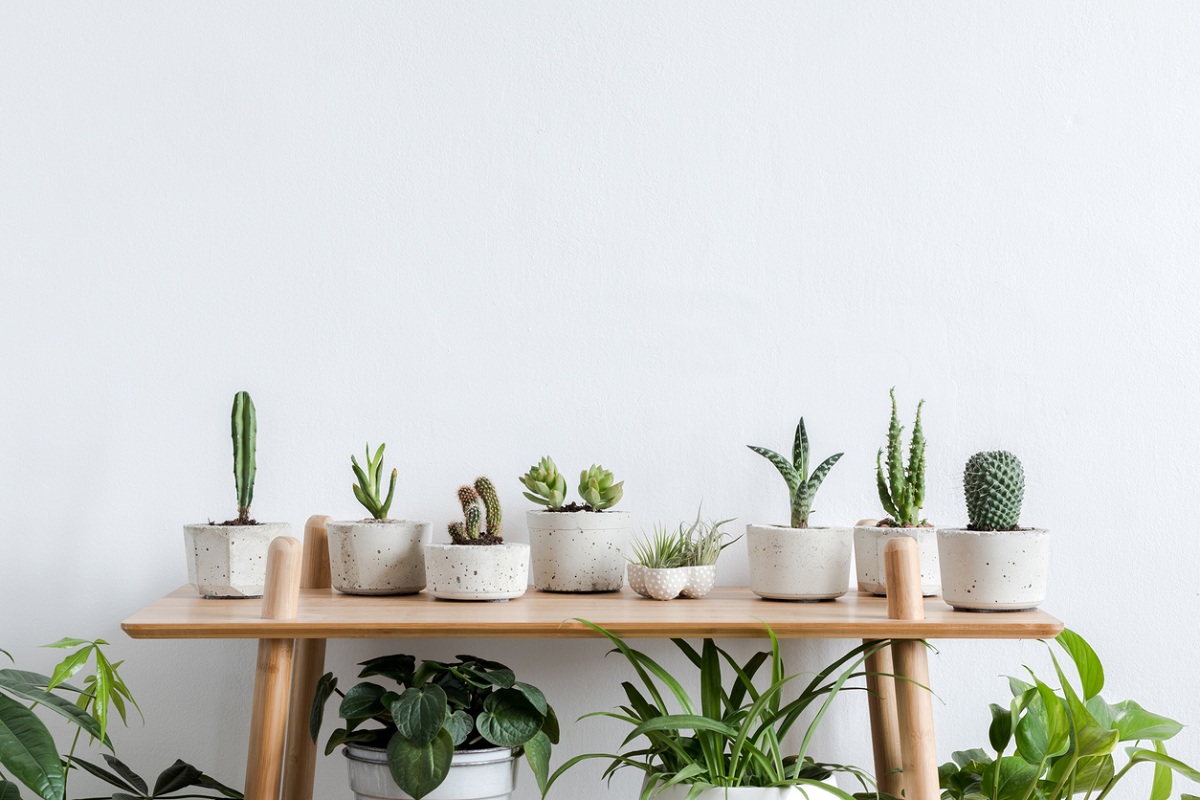Study on how music helps plants grow
A study was directed to find the impact of devotional music on plants. It is believed that sound stimulates the germination of mung bean seeds.
If your lifestyle is fast-paced or you aren’t home too often, a succulent is often your best bet.

Photo: iStock (representational image)
Decorating with houseplants has all kinds of benefits; they produce extra oxygen through photosynthesis, help reduce stress, and can even increase your productivity if you include them on your desk or in your home office. To sum it up, there’s no easier way to enhance your home’s aesthetic than with a classic touch of greenery. One of the effortless ways to liven up your home is by introducing plants. They have a way of making space feel bright and lively at the same time alongside reassuring general well-being by creating a connection with nature and the outdoors, says Priya Chaudhary, Co-founder at Amsel Design Studio. Choosing the right indoor plant is as important as any other factor in your home interior. And there are so many variations of plants, hence, the placement, level of lighting in the spot, level of maintenance and size are important things to look into while choosing the right plant for your room.
CLIMBERS MAGIC
If you’re big on making the outdoors a big part of your interior, you can actually have a climber plant climb on the staircase wall or even a bookshelf. Even though climbers may take time growing, the wait is totally worth it once the result starts to show. Recommended, Devil’s ivy, which is commonly known as the money plant or golden pothos in India. Heart-shaped leaves with yellow or white speckles are the main characteristics of this evergreen climber vine. It is a low-care, fast-growing plant.
Advertisement
OVERSIZED STATEMENT PLANTS
Use plants to break up different areas of your home, to create privacy screens or to add a wow factor or focal point to a large room. Try the bushy fiddle-leaf fig for greening up a corner, beside your couch, near a favourite armchair, or in front of a picture window. This helps anchor a large room and gives your space a focal point. Make sure that the plants are proportionate to the size of the room. For compact spaces, they should not exceed 2.5- 3 feet in height.
Advertisement
SHELVING PLANTS
Smaller plants or succulents are great additions to your shelves. Placing them on your mantles, bookcases and shelves is an effortless way to bring new energy into your space. You could also decorate a desk, dining table or a centre table with succulents or even better, use multicoloured planters or pots with a metallic finish to make a cluster at the corner of your working desk. If your lifestyle is fast-paced or you aren’t home too often, a succulent is often your best bet.
BATHROOM BLOOMERS
Not all plants need streaming light and lots of attention. Go for foliage heavy plants rather than flowers and if in doubt stick to ferns like the Asparagus (although if your bathroom has no natural light then no plants will last very long). Money plants, snake plants, and aloe vera are best suited for the bathroom.
LET IT HANG
Trailing plants are really popular and easy to look after. If you can’t hang anything from the ceiling, use wall planters or plant stands of various heights or fill a shelf with plants such as the spider plant, chain cactus or ivy. Use tension rods throughout your home to get your greenery off of counters, tabletops and window sills, instead, large and sturdy tension rods can hold a significant amount of weight from larger plants.
Advertisement